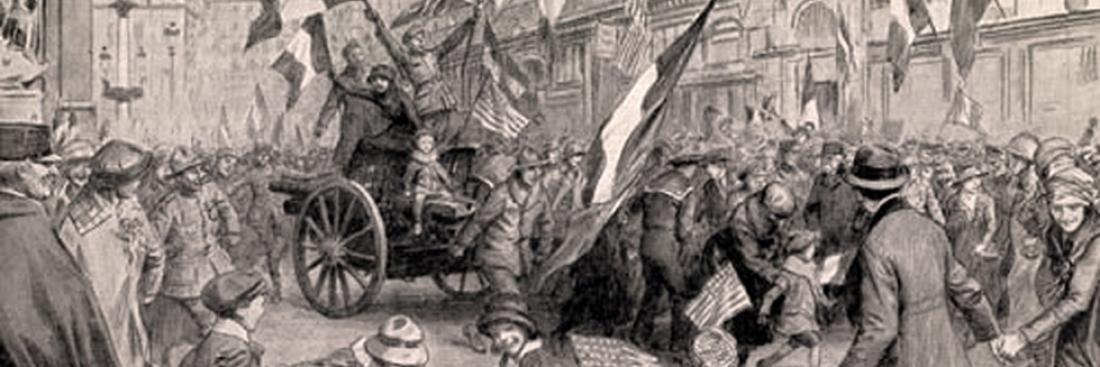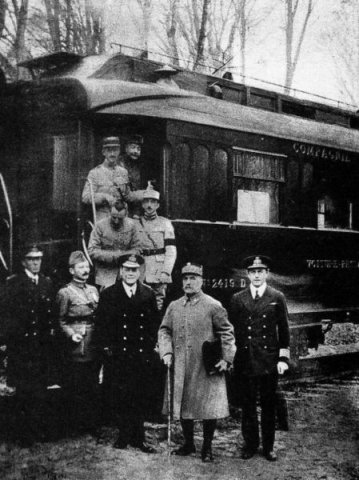
Des canons allemands sont traînés, le 11 novembre 1918, sur la place de l'Opéra et les boulevards, au milieu des farandoles.
Why is 11 November still today one of the major dates in the French commemorative calendar?
If 11 November has become a day of remembrance, it is also the recollection of a single day, the Armistice of 1918 that finally brought the battles of the First World War (1914-1918) to an end.

The Armistice procession, 11 November 1918. Source: SHD collection